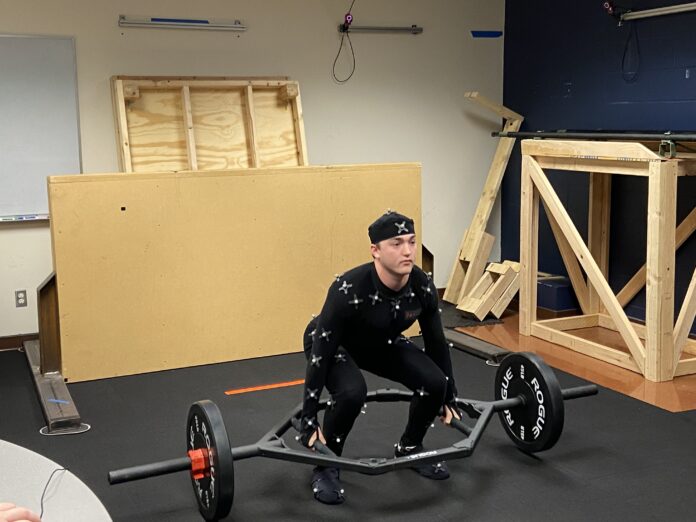
The U.S. Army turned to the University of Iowa for help in determining the effectiveness of its new fitness test, the Army Combat Fitness Test (ACFT).
In collaboration with the Virtual Soldier Research group, UI scientists were tasked with evaluating the science behind the Army’s test. The institute’s goal was to see if the newly improved test was a better indicator of peak physical performance rather than the Army basic training physical fitness test, the previous iteration.
The team at UI found that the scientific reasoning behind the Army’s alterations to the test were strong, as proven by technology called Santos, invented by ITI Director and UI professor of biomedical engineering Dr. Karim Malek.
Santos (and its female counterpart, Sophia) is a biomechanically accurate, “digital avatar” that predicts behavior through recorded motion of various exercises, similar to how video games record motion for realistic movements. Data picked up by infrared cameras is uploaded to a computer where additional sets can be simulated, allowing researchers to see just how strenuous different aspects of the ACFT is to a participant in an environment.
The program is meant to understand load, strength, fatigue and other factors for all different body types seen in the Army, says Mr. Malek. Test requirements vary based on the person’s role in the Army – this is not meant to be a one-size-fits-all approach.
The university received around a million dollars in funding, he said, to utilize Santos for the purpose of assisting the Army.
Initially developed in 2003 through research funding totaling $23 million from the Department of Defense and industrial corporations, Santos has been used in many industries.
“We’ve worked with Caterpillar by designing big construction equipment,” said Mr. Malek. “We’ve also worked with Ford, GM and Chrysler in the design of assembly lines and auto packaging, which means how to design the car from the inside.”
Branching off of Santos is GruntSim, a tool for burden management that resulted from a five-year, $8.6 million project called Enhanced Technologies for Optimization of Warfighter Load, according to the UI website. This allows better research for the study of load carriage for military personnel.
Several departments collaborated on the partnership with the Army to better understand metrics that need tracking, including the Carver College of Medicine and the kinesiology department, he noted.
For more than 40 years, the Army measured strength and fitness through a relatively rudimentary fitness test consisting of push-ups, sit-ups and a two-mile run. Under the ACFT, there are now six components to the test: A three repetition maximum deadlift; a standing power through; hand release push-ups, sprint-drag-carry; leg tucks or a two minute plank; and a two-mile run.
Through the ACFT, the Army wanted to improve soldier and unit readiness, reduce preventable injuries and better measure mental toughness through a more rigorous exam, says Mr. Malek.
Total implementation of the ACFT throughout the Army is expected within the next year.




